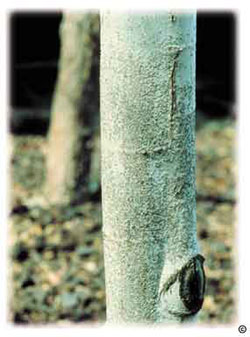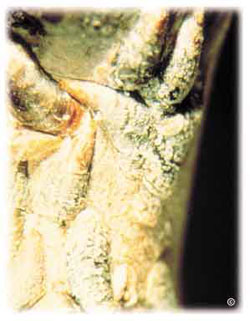
Oystershell scales attach themselves to the bark of twigs, branches and trunks and cause injury by sucking plant juices, sometimes killing a branch or even an entire tree. The scale is about one-eighth of an inch long, brown, and shaped like an oyster shell.
In Colorado, the oystershell scale winters in the egg stage. The eggs are protected by a shell of a dead scale which remains attached to bark. Eggs hatch in late May or early June. Young crawlers move about for few hours, find a suitable location, insert their mouthparts into the plant, feed and then molt. Within a week they are protected by a waxy covering. They will remain on the plant for the rest of their lives.
More than 50 plant species are attacked by oystershell scale. Of these, ash, cotoneaster, aspen, dogwood, lilac, poplar and willow are the most commonly infested. Scale crawlers, the immature stage of the insect, can be killed soon after hatching with insecticides such as oils, Orthene (acephate), Sevin, permethrin, bifenthrin and byfluthrin.  In the spring, place a dark cloth or paper under the tree and shake the tree, watching for the pale yellow crawlers. When they fall from the tree, use the insecticide. Always follow label directions. If infestations are heavy, prune the infested branches, especially if adjacent trees are not infested.
In the spring, place a dark cloth or paper under the tree and shake the tree, watching for the pale yellow crawlers. When they fall from the tree, use the insecticide. Always follow label directions. If infestations are heavy, prune the infested branches, especially if adjacent trees are not infested.
For more information, see the following Colorado State University Extension fact sheet(s).
- Backyard Orchard: Apples and Pears
- Cytospora Canker
- Oystershell Scale
- Aphids on Shade Trees and Ornamentals
- Western Corn Rootworm
- Insect Control: Horticultural Oils



